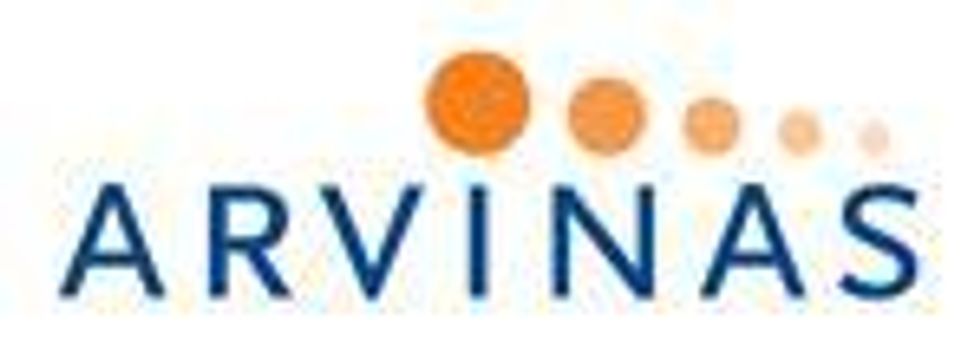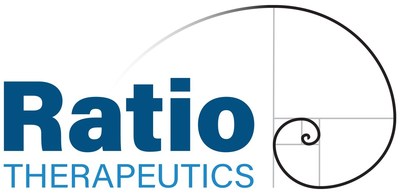ARV-471 continues to show a favorable tolerability profile and robust ER degradation in updated phase 1 dose escalation data presented at San Antonio Breast Cancer Symposium –
– ARV-471 is expected to enter two Phase 3 registrational clinical trials in 2022 –
NEW HAVEN, Conn. and NEW YORK, Dec. 10, 2021 (GLOBE NEWSWIRE) -- Arvinas, Inc. (Nasdaq: ARVN) and Pfizer Inc. (NYSE: PFE) today announced an update on Phase 1 dose escalation data of ARV-471, a novel PROTAC® estrogen receptor (ER) degrader, which is being co-developed for the treatment of patients with locally advanced or metastatic ER-positive/human epidermal growth factor receptor 2 (HER2)-negative breast cancer (ER+/HER2-). These data were presented as a virtual spotlight poster session at the 2021 San Antonio Breast Cancer Symposium (SABCS) and showed:
- ARV-471 demonstrated antitumor activity in CDK4/6 inhibitor-pretreated patients with a clinical benefit rate (CBR) of 40% in 47 evaluable patients. This heavily pretreated patient group had a median of four prior therapies.
- Three patients exhibited confirmed partial responses (PR) among the 38 patients with response evaluation criteria in solid tumors (RECIST) measurable lesions and at least one on-treatment tumor assessment.
- ARV-471 continues to demonstrate a favorable tolerability profile. Robust ER degradation was observed at all dose levels, reaching 89% reduction of ER.
Erika P. Hamilton, MD, Director of the Breast Cancer and Gynecologic Cancer Research Program and Principal Investigator, Sarah Cannon Research Institute, provided an overview of these data.
"These results continue to suggest that ARV-471 has the potential to become a first-in-category treatment, and a new standard of care, for ER+/HER2- breast cancer patients," said John Houston, Ph.D., Chief Executive Officer at Arvinas. "The profile we see emerging for this drug candidate continues to validate our PROTAC® protein degrader platform, with ARV-471 showing clear signals of clinical benefit in a heavily pretreated patient population, including tumor shrinkage and good tolerability."
These data support and further validate the evaluation of ARV-471 as a potential treatment for metastatic breast cancer that is ongoing in a Phase 1b combination study with IBRANCE® (palbociclib) and a Phase 2 monotherapy dose expansion study.
"We are excited by these results and believe ARV-471 is a promising ER-targeting investigational medicine," said Chris Boshoff, M.D., Ph.D., Chief Development Officer, Oncology, Pfizer Global Product Development. "It is encouraging to see ARV-471 continuing to show durable efficacy and tolerability in heavily pre-treated patients with ER+ breast cancer who have limited treatment choices."
ARV-471 Clinical Update
Enrollment
As of the data cut-off date of September 30, 2021, 60 adult patients with locally advanced or metastatic ER+/HER2- breast cancer were treated in the Phase 1 dose escalation portion of the study with total daily ARV-471 doses ranging from 30 mg to 700 mg. This patient group is heavily pretreated, with a median of four prior therapies. All patients were previously treated with cyclin-dependent kinase (CDK) 4/6 inhibitors; 80% of patients received prior fulvestrant; and 78% received prior chemotherapy.
Efficacy
Of 47 patients who were evaluable for clinical benefit (confirmed complete response, PR, or stable disease ≥ 24 weeks) the CBR was 40%. As of the data cutoff date, 14 patients were continuing to receive study treatment, including two patients who had been on treatment for over 18 months. Three confirmed PRs were observed among the 38 patients with baseline RECIST measurable disease and at least one on-treatment tumor assessment.
Safety
Patients were treated in the monotherapy escalation at total daily doses of 30 mg (n=3), 60 mg (n=3), 120 mg (n=7), 180/200 mg (n=11), 360 mg (n=15), 500 mg (n=17), and 700 mg (n= 4). All patients in the 700 mg cohort received ARV-471 twice-daily, a subset of patients who received 500 mg as a total daily dose received ARV-471 twice-daily , and other all doses were administered once-daily. A maximum tolerated dose was not reached and no dose limiting toxicities or Grade ≥4 treatment-related adverse events (TRAEs) were observed. Of the 60 patients, 37% had Grade 1 TRAEs and 57% had Grade ≤2 TRAEs, and the most common TRAEs were nausea (29%), fatigue (20%), and vomiting (10%). No Grade 1 or 2 TRAEs led to discontinuation or dose reduction of ARV-471. Four patients experienced six Grade 3 TRAEs that were potentially related to ARV-471, including: headache lasting 1-day, single occurrence of asymptomatic increased amylase and lipase, nausea and asymptomatic QTc prolongation, and post-biopsy venous embolism. The patient with the venous embolism was the only Grade 3 patient who discontinued ARV-471 due to a TRAE, and the patient with Grade 3 nausea was the only patient with a dose reduction due to a TRAE (reduced from 500 mg to 400 mg daily).
ER Degradation
In paired biopsies from 14 patients across all doses up to 500 mg daily, robust ER degradation of up to 89% was observed, regardless of ESR1 mutation status. Median and mean ER degradation across dose levels were 67% and 64%, respectively.
Pharmacokinetics
ARV-471 demonstrated a dose-related increase in plasma exposure, with doses from 30 mg to 500 mg daily, resulting in steady-state C max and AUC 24 that exceeded the exposure associated with tumor regression in preclinical breast cancer models. Mean exposure on day 15 exceeded the nonclinical efficacious range at doses ≥60 mg daily.
Anticipated 2021/2022 Milestones
- ARV-471 currently is being evaluated as a treatment for metastatic breast cancer in a Phase 1 dose escalation study, a Phase 1b combination study with IBRANCE® (palbociclib), and a Phase 2 monotherapy dose expansion study.
- In 2022, we expect to:
- Initiate Phase 3 studies across lines of therapy in metastatic breast cancer, as both monotherapy and in combination.
- Initiate two additional trials of ARV-471, including a Phase 1b combination trial with everolimus in 2L/3L metastatic breast cancer, potentially as part of a planned umbrella study to explore multiple combination agents, and a Phase 2 neoadjuvant trial in early breast cancer.
- Present data from the ongoing Phase 1b combination study with IBRANCE® (palbociclib) and from the ongoing Phase 2 monotherapy dose expansion study.
Investor Conference Call Details
Arvinas will host a conference call and webcast at 8:30 AM ET on Friday, December 10, 2021, to discuss these data. Pfizer Oncology executives will also participate in this call. Participants are invited to listen by dialing (844) 467-7654 (domestic) or (602) 563-8497 (international) five minutes prior to the start of the call and providing the passcode 9122219.
Supporting materials for the conference call and webcast will be available on the Arvinas' website at www.arvinas.com under Events + Presentations . A replay of the webcast will be archived on the Arvinas website following the presentation.
About ARV-471
ARV-471 is an investigational orally bioavailable PROTAC® protein degrader designed to specifically target and degrade the estrogen receptor (ER) for the treatment of patients with locally advanced or metastatic ER+/HER2- breast cancer.
In preclinical studies, ARV-471 demonstrated near-complete ER degradation in tumor cells, induced robust tumor shrinkage when dosed as a single agent in multiple ER-driven xenograft models, and showed superior anti-tumor activity when compared to a standard of care agent, fulvestrant, both as a single agent and in combination with a CDK4/6 inhibitor. In July 2021, Arvinas announced a global collaboration with Pfizer for the co-development and co-commercialization of ARV-471; Arvinas and Pfizer will equally share worldwide development costs, commercialization expenses, and profits.
About Arvinas
Arvinas is a clinical-stage biopharmaceutical company dedicated to improving the lives of patients suffering from debilitating and life-threatening diseases through the discovery, development, and commercialization of therapies that degrade disease-causing proteins. Arvinas uses its proprietary PROTAC® Discovery Engine platform to engineer proteolysis targeting chimeras, or PROTAC® targeted protein degraders, that are designed to harness the body's own natural protein disposal system to selectively and efficiently degrade and remove disease-causing proteins. In addition to its robust preclinical pipeline of PROTAC® protein degraders against validated and "undruggable" targets, the company has three clinical-stage programs: ARV-110 and ARV-766 for the treatment of men with metastatic castrate-resistant prostate cancer; and ARV-471 for the treatment of patients with locally advanced or metastatic ER+/HER2- breast cancer. For more information, visit www.arvinas.com .
Arvinas Forward-Looking Statements
This press release contains forward-looking statements that involve substantial risks and uncertainties, including statements regarding the development and regulatory status of ARV-471 and other candidates in our pipeline, and the timing of clinical trials and data from those trials and plans for registration for our product candidates, the therapeutic potential of our product candidates, and the potential commercialization of any of our product candidates. All statements, other than statements of historical facts, contained in this press release, including statements regarding our strategy, future operations, prospects, plans and objectives of management, are forward-looking statements. The words "anticipate," "believe," "estimate," "expect," "intend," "may," "might," "plan," "predict," "project," "target," "potential," "will," "would," "could," "should," "continue," and similar expressions are intended to identify forward-looking statements, although not all forward-looking statements contain these identifying words.
We may not actually achieve the plans, intentions or expectations disclosed in our forward-looking statements, and you should not place undue reliance on our forward-looking statements. Actual results or events could differ materially from the plans, intentions and expectations disclosed in the forward-looking statements we make as a result of various risks and uncertainties, including but not limited to: whether we and Pfizer will be able to successfully conduct and complete clinical development for ARV-471, initiate and complete other clinical trials for our product candidates, and receive results from our clinical trials on our expected timelines, or at all and other important factors discussed in the "Risk Factors" sections contained in our quarterly and annual reports on file with the Securities and Exchange Commission. The forward-looking statements contained in this press release reflect our current views with respect to future events, and we assume no obligation to update any forward-looking statements except as required by applicable law. These forward-looking statements should not be relied upon as representing our views as of any date subsequent to the date of this release.
About IBRANCE ® (palbociclib) 125 mg tablets and capsules
IBRANCE is an oral inhibitor of CDKs 4 and 6, 1 which are key regulators of the cell cycle that trigger cellular progression. 2,3 In the U.S., IBRANCE is indicated for the treatment of adult patients with HR+, HER2- advanced or metastatic breast cancer in combination with an aromatase inhibitor as initial endocrine based therapy in postmenopausal women or in men; or with fulvestrant in patients with disease progression following endocrine therapy.
The full U.S. Prescribing Information for the IBRANCE tablets and the IBRANCE capsules can be found here and here .
IMPORTANT IBRANCE ® (palbociclib) SAFETY INFORMATION FROM THE U.S. PRESCRIBING INFORMATION
Neutropenia was the most frequently reported adverse reaction in PALOMA-2 (80%) and PALOMA-3 (83%). In PALOMA-2, Grade 3 (56%) or 4 (10%) decreased neutrophil counts were reported in patients receiving IBRANCE plus letrozole. In PALOMA-3, Grade 3 (55%) or Grade 4 (11%) decreased neutrophil counts were reported in patients receiving IBRANCE plus fulvestrant. Febrile neutropenia has been reported in 1.8% of patients exposed to IBRANCE across PALOMA-2 and PALOMA-3. One death due to neutropenic sepsis was observed in PALOMA-3. Inform patients to promptly report any fever.
Monitor complete blood count prior to starting IBRANCE, at the beginning of each cycle, on Day 15 of first 2 cycles and as clinically indicated. Dose interruption, dose reduction, or delay in starting treatment cycles is recommended for patients who develop Grade 3 or 4 neutropenia.
Severe, life-threatening, or fatal interstitial lung disease (ILD) and/or pneumonitis can occur in patients treated with CDK4/6 inhibitors, including IBRANCE when taken in combination with endocrine therapy. Across clinical trials (PALOMA-1, PALOMA-2, PALOMA-3), 1.0% of IBRANCE-treated patients had ILD/pneumonitis of any grade, 0.1% had Grade 3 or 4, and no fatal cases were reported. Additional cases of ILD/pneumonitis have been observed in the post-marketing setting, with fatalities reported.
Monitor patients for pulmonary symptoms indicative of ILD/pneumonitis (e.g., hypoxia, cough, dyspnea). In patients who have new or worsening respiratory symptoms and are suspected to have developed pneumonitis, interrupt IBRANCE immediately and evaluate the patient. Permanently discontinue IBRANCE in patients with severe ILD or pneumonitis.
Based on the mechanism of action, IBRANCE can cause fetal harm . Advise females of reproductive potential to use effective contraception during IBRANCE treatment and for at least 3 weeks after the last dose. IBRANCE may impair fertility in males and has the potential to cause genotoxicity. Advise male patients to consider sperm preservation before taking IBRANCE. Advise male patients with female partners of reproductive potential to use effective contraception during IBRANCE treatment and for 3 months after the last dose. Advise females to inform their healthcare provider of a known or suspected pregnancy. Advise women not to breastfeed during IBRANCE treatment and for 3 weeks after the last dose because of the potential for serious adverse reactions in nursing infants.
The most common adverse reactions (≥10%) of any grade reported in PALOMA-2 for IBRANCE plus letrozole vs placebo plus letrozole were neutropenia (80% vs 6%), infections (60% vs 42%), leukopenia (39% vs 2%), fatigue (37% vs 28%), nausea (35% vs 26%), alopecia (33% vs 16%), stomatitis (30% vs 14%), diarrhea (26% vs 19%), anemia (24% vs 9%), rash (18% vs 12%), asthenia (17% vs 12%), thrombocytopenia (16% vs 1%), vomiting (16% vs 17%), decreased appetite (15% vs 9%), dry skin (12% vs 6%), pyrexia (12% vs 9%), and dysgeusia (10% vs 5%).
The most frequently reported Grade ≥3 adverse reactions (≥5%) in PALOMA-2 for IBRANCE plus letrozole vs placebo plus letrozole were neutropenia (66% vs 2%), leukopenia (25% vs 0%), infections (7% vs 3%), and anemia (5% vs 2%).
Lab abnormalities of any grade occurring in PALOMA-2 for IBRANCE plus letrozole vs placebo plus letrozole were decreased WBC (97% vs 25%), decreased neutrophils (95% vs 20%), anemia (78% vs 42%), decreased platelets (63% vs 14%), increased aspartate aminotransferase (52% vs 34%), and increased alanine aminotransferase (43% vs 30%).
The most common adverse reactions (≥10%) of any grade reported in PALOMA-3 for IBRANCE plus fulvestrant vs placebo plus fulvestrant were neutropenia (83% vs 4%), leukopenia (53% vs 5%), infections (47% vs 31%), fatigue (41% vs 29%), nausea (34% vs 28%), anemia (30% vs 13%), stomatitis (28% vs 13%), diarrhea (24% vs 19%), thrombocytopenia (23% vs 0%), vomiting (19% vs 15%), alopecia (18% vs 6%), rash (17% vs 6%), decreased appetite (16% vs 8%), and pyrexia (13% vs 5%).
The most frequently reported Grade ≥3 adverse reactions (≥5%) in PALOMA-3 for IBRANCE plus fulvestrant vs placebo plus fulvestrant were neutropenia (66% vs 1%) and leukopenia (31% vs 2%).
Lab abnormalities of any grade occurring in PALOMA-3 for IBRANCE plus fulvestrant vs placebo plus fulvestrant were decreased WBC (99% vs 26%), decreased neutrophils (96% vs 14%), anemia (78% vs 40%), decreased platelets (62% vs 10%), increased aspartate aminotransferase (43% vs 48%), and increased alanine aminotransferase (36% vs 34%).
Avoid concurrent use of strong CYP3A inhibitors . If patients must be administered a strong CYP3A inhibitor, reduce the IBRANCE dose to 75 mg. If the strong inhibitor is discontinued, increase the IBRANCE dose (after 3-5 half-lives of the inhibitor) to the dose used prior to the initiation of the strong CYP3A inhibitor. Grapefruit or grapefruit juice may increase plasma concentrations of IBRANCE and should be avoided. Avoid concomitant use of strong CYP3A inducers . The dose of sensitive CYP3A substrates with a narrow therapeutic index may need to be reduced as IBRANCE may increase their exposure.
For patients with severe hepatic impairment (Child-Pugh class C), the recommended dose of IBRANCE is 75 mg. The pharmacokinetics of IBRANCE have not been studied in patients requiring hemodialysis .
About Pfizer Oncology
At Pfizer Oncology, we are committed to advancing medicines wherever we believe we can make a meaningful difference in the lives of people living with cancer. Today, we have an industry-leading portfolio of 24 approved innovative cancer medicines and biosimilars across more than 30 indications, including breast, genitourinary, colorectal, blood and lung cancers, as well as melanoma.
About Pfizer: Breakthroughs That Change Patients' Lives
At Pfizer, we apply science and our global resources to bring therapies to people that extend and significantly improve their lives. We strive to set the standard for quality, safety and value in the discovery, development and manufacture of health care products, including innovative medicines and vaccines. Every day, Pfizer colleagues work across developed and emerging markets to advance wellness, prevention, treatments and cures that challenge the most feared diseases of our time. Consistent with our responsibility as one of the world's premier innovative biopharmaceutical companies, we collaborate with health care providers, governments and local communities to support and expand access to reliable, affordable health care around the world. For more than 170 years, we have worked to make a difference for all who rely on us. We routinely post information that may be important to investors on our website at www.Pfizer.com . In addition, to learn more, please visit us on www.Pfizer.com and follow us on Twitter at @Pfizer and @Pfizer News, LinkedIn, YouTube and like us on Facebook at Facebook.com/Pfizer.
Pfizer Forward-Looking Statements
The information contained in this release is as of December 10, 2021. Pfizer assumes no obligation to update forward-looking statements contained in this release as the result of new information or future events or developments.
This release contains forward-looking information about ARV-471 and a global collaboration between Pfizer and Arvinas to develop and commercialize ARV-471, including their potential benefits, that involves substantial risks and uncertainties that could cause actual results to differ materially from those expressed or implied by such statements. Risks and uncertainties include, among other things, the uncertainties inherent in research and development, including the ability to meet anticipated clinical endpoints, commencement and/or completion dates for clinical trials, regulatory submission dates, regulatory approval dates and/or launch dates, as well as the possibility of unfavorable new clinical data and further analyses of existing clinical data; risks associated with interim data; the risk that clinical trial data are subject to differing interpretations and assessments by regulatory authorities; whether regulatory authorities will be satisfied with the design of and results from the clinical studies; whether and when any applications may be filed for ARV-471 for any potential indications in any jurisdictions; whether and when regulatory authorities may approve any potential applications that may be filed for ARV-471 in any jurisdictions, which will depend on myriad factors, including making a determination as to whether the product's benefits outweigh its known risks and determination of the product's efficacy and, if approved, whether ARV-471 will be commercially successful; decisions by regulatory authorities impacting labeling, manufacturing processes, safety and/or other matters that could affect the availability or commercial potential of ARV-471; whether the collaboration between Pfizer and Arvinas will be successful; uncertainties regarding the impact of COVID-19 on Pfizer's business, operations and financial results; and competitive developments.
A further description of risks and uncertainties can be found in Pfizer's Annual Report on Form 10-K for the fiscal year ended December 31, 2020 and in its subsequent reports on Form 10-Q, including in the sections thereof captioned "Risk Factors" and "Forward-Looking Information and Factors That May Affect Future Results", as well as in its subsequent reports on Form 8-K, all of which are filed with the U.S. Securities and Exchange Commission and available at www.sec.gov and www.pfizer.com .
1 IBRANCE® (palbociclib) Prescribing Information. New York. NY: Pfizer Inc: 2019.
2 Weinberg, RA. pRb and Control of the Cell Cycle Clock. In: Weinberg RA, ed. The Biology of Cancer. 2nd ed. New York, NY: Garland Science; 2014:275-329.
3 Sotillo E, Grana X. Escape from Cellular Quiescence. In: Enders GH, ed. Cell Cycle Deregulation in Cancer. New York, NY: Humana Press; 2010:3-22.
Arvinas Contacts
Investors:
Jeff Boyle, Arvinas Investor Relations
+1 (347) 247-5089
Jeff.Boyle@arvinas.com
Media:
Kirsten Owens, Arvinas Communications
+1 (203) 584-0307
Kirsten.Owens@arvinas.com
Pfizer Media Contacts
Investors:
+1 (212) 733-4848
IR@pfizer.com
Media:
+1 (212) 733-1226
PfizerMediaRelations@pfizer.com







